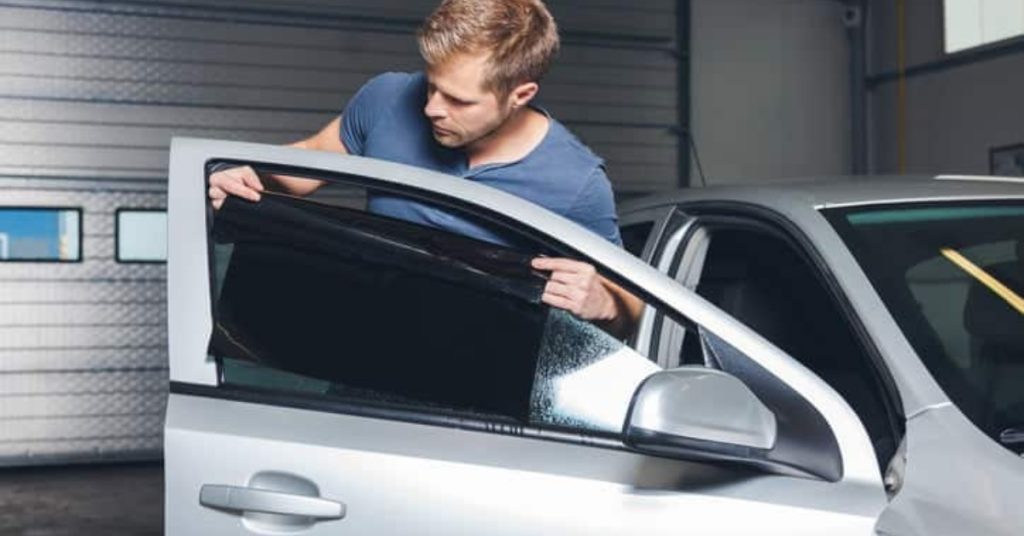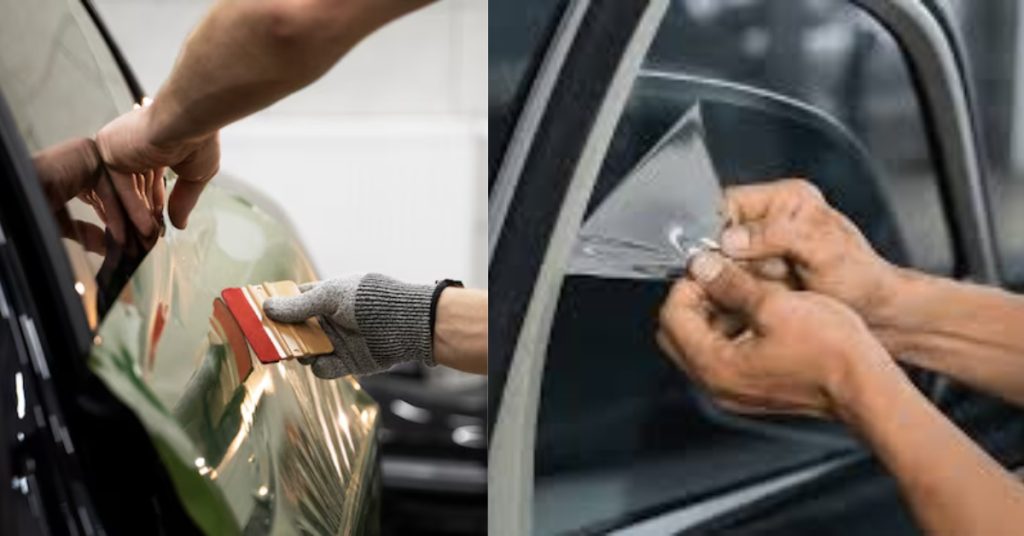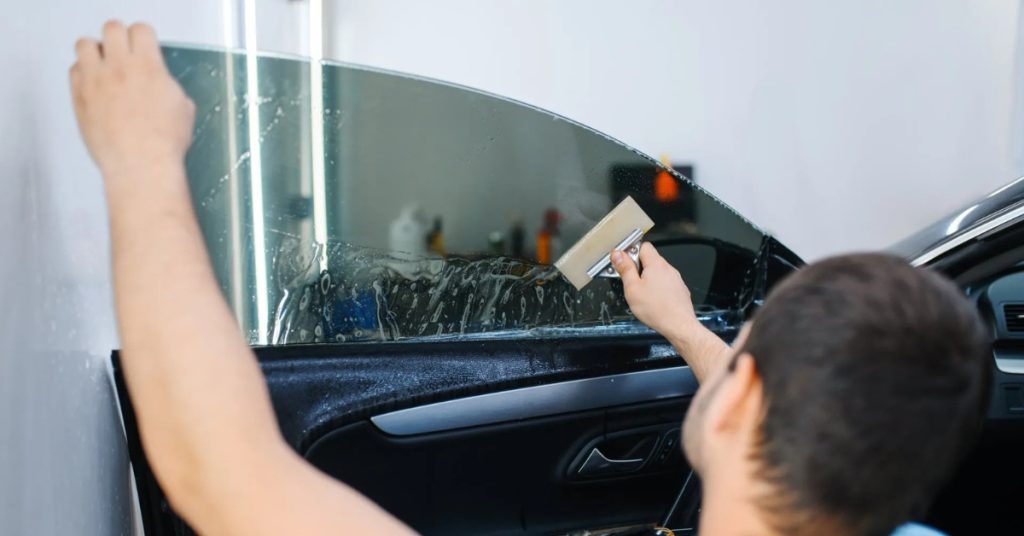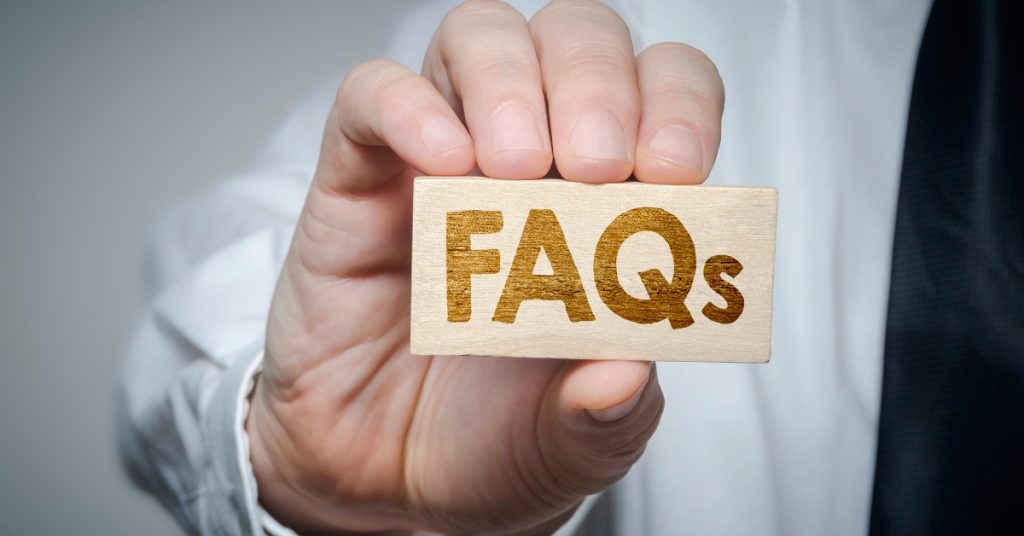- As an Amazon Associate, I earn from qualifying purchases.
Car window tinting has become one of the most popular automotive modifications, offering drivers increased privacy, protection from harmful UV rays, reduced glare, and enhanced aesthetics. This thin film applied to your vehicle’s glass can transform both the appearance and comfort of your ride while potentially reducing interior heat by up to 60%.
However, one question consistently tops the list of concerns for car owners considering this upgrade: how much does it cost to tint car windows? The answer isn’t straightforward, as pricing varies significantly based on factors like tint quality, vehicle size, location, and whether you choose professional installation or attempt a DIY approach. Understanding these cost variables will help you make an informed decision and avoid surprises when you visit your local tinting shop.

Contents
- 1 Why It’s Important to Understand Car Window Tinting Costs
- 2 How Much Does It Cost to Tint Car Windows (Step-by-Step Breakdown)
- 3 Factors That Affect the Cost of Car Window Tinting
- 4 Professional Tinting vs DIY Kits – Cost Comparison
- 5 Making the Right Investment in Window Tinting
- 6 Frequently Asked Questions About How Much Does it Cost to Tint Car Windows
Why It’s Important to Understand Car Window Tinting Costs
Getting a clear picture of window tinting expenses serves multiple purposes beyond simple budgeting. When you understand the typical price ranges, you can set realistic expectations and avoid sticker shock at the shop. More importantly, this knowledge protects you from two common pitfalls: overpaying for basic services or falling for suspiciously low-priced deals that often result in poor-quality work.
Armed with cost information, you can make informed decisions based on your specific needs. Different vehicles require varying amounts of film and labor time, while your state’s legal tint limits might influence which products you can legally install. Quality levels range dramatically in the tinting world, and understanding why premium ceramic films cost significantly more than basic dyed options helps you weigh the long-term value against upfront expenses.
This knowledge also enables you to compare quotes effectively. When you know that ceramic tint installation on an SUV typically costs $400-$800, you can quickly identify whether a shop’s $1,200 quote includes premium features or represents overcharging.
How Much Does It Cost to Tint Car Windows (Step-by-Step Breakdown)
- Basic Dyed Tint: $100–$250
- Metallic or Carbon Film: $200–$500
- Ceramic/High-Performance Tint: $400–$800+
Basic Dyed Tint: $100–$250
Entry-level dyed window tint represents the most affordable option for car owners on a tight budget. This film type uses dye between adhesive layers to achieve darkness levels, making it suitable for basic privacy and light reduction. Professional installation typically costs between $100-$250 for a standard sedan, with compact cars falling on the lower end and larger sedans approaching the higher range.
While dyed tint offers immediate cost savings, it comes with limitations. The dye can fade over time, potentially developing a purple hue after several years of sun exposure. Heat rejection capabilities remain minimal compared to more advanced options, and you won’t get the same UV protection levels as premium alternatives.
Metallic or Carbon Film: $200–$500
Mid-range window films include metallic and carbon options, each offering distinct advantages over basic dyed tint. Metallic films incorporate tiny metallic particles that reflect heat and provide excellent durability, while carbon films offer superior heat rejection without interfering with electronic devices like GPS or cell phones.
Professional installation of metallic or carbon tint typically ranges from $200-$500, depending on your vehicle size and the specific product chosen. Carbon film generally costs slightly more than metallic options but provides better long-term value for most drivers. These films resist fading, offer improved heat reduction, and maintain their appearance for many years.
Ceramic/High-Performance Tint: $400–$800+
Premium ceramic window tint represents the top tier of automotive films, utilizing advanced nano-ceramic technology to provide maximum heat rejection, UV protection, and optical clarity. These films block up to 99% of harmful UV rays while rejecting significant amounts of infrared heat, keeping your car’s interior cooler and more comfortable.
Ceramic tint installation costs typically range from $400-$800 for most vehicles, with luxury cars and larger SUVs potentially exceeding this range. While the upfront investment is substantial, ceramic films often include lifetime warranties and provide the best combination of performance, durability, and aesthetics available.

Cost by Vehicle Type
Vehicle size directly impacts tinting costs due to the amount of film required and installation complexity. Sedans and compact cars represent the most affordable category, typically requiring 15-20 square feet of film for full coverage. Coupes often fall into a similar price range despite having fewer windows due to their typically larger rear window.
SUVs and crossovers require significantly more film, often 25-35 square feet for complete coverage including rear passenger windows and cargo areas. This increased material requirement, combined with more complex installation around multiple windows, typically adds $100-$300 to the base tinting cost.
Pickup trucks present unique challenges, with extended and crew cab models requiring substantial film coverage. Large trucks may need 30+ square feet of film, pushing costs toward the higher end of each tint category. Luxury vehicles and exotic cars often command premium pricing due to curved glass, complex window shapes, or specialized installation requirements.
Partial vs Full Vehicle Tinting
Many car owners opt for partial tinting to reduce costs while still gaining privacy and heat reduction benefits. Front window tinting alone typically costs $50-$150, depending on tint quality and local regulations. However, partial jobs often result in mismatched appearance and limited overall benefits.
Full vehicle tinting provides the most dramatic results and typically offers better per-window value. While the upfront cost is higher, complete tinting ensures uniform appearance, maximum heat rejection, and comprehensive UV protection for all occupants.
Factors That Affect the Cost of Car Window Tinting
Tint Film Quality and Brand
The quality gap between budget and premium window films is substantial, directly impacting both price and performance. Recognized brands like 3M, Llumar, and SunTek command higher prices due to superior materials, extensive research and development, and comprehensive warranty programs. These manufacturers invest heavily in technology, resulting in films that offer better heat rejection, color stability, and longevity.
Generic or off-brand films may cost 30-50% less but often lack the performance characteristics and durability of premium options. While this might seem attractive initially, cheaper films frequently require replacement sooner, potentially making them more expensive long-term.
Number of Windows Tinted
Labor costs scale with the number of windows requiring tint, though shops often provide per-window discounts for complete vehicles. Front windows typically cost $25-$75 each, while rear windows range from $30-$100 depending on size and complexity. Large rear windows on SUVs or trucks command the highest individual prices due to the significant film area required.
Many shops offer package pricing for complete vehicles, providing better value than individual window pricing. These packages often include additional services like edge sealing or extended warranties.
Vehicle Type and Size
Beyond simple square footage, vehicle design significantly impacts installation complexity and cost. Cars with heavily curved windows, multiple angles, or unique shapes require more skill and time to tint properly. Luxury vehicles often feature specialized glass or coatings that demand particular installation techniques or compatible films.
Convertibles present special challenges, with soft-top models requiring careful consideration of window mechanisms and sealing. Some shops charge premium rates for these installations due to increased complexity and potential liability.
Location and Market Factors
Geographic location substantially influences tinting costs due to varying labor rates, competition levels, and local regulations. Urban areas typically feature higher prices due to increased overhead costs but may offer more shop options and competitive pricing. Rural locations might have limited options, potentially driving prices higher despite lower overall costs of living.
States with strict tinting regulations may require specialized films or installation techniques, impacting overall costs. Shops in these areas often invest in training and equipment to ensure legal compliance, expenses that get passed to customers.
Labor Charges and Shop Reputation
Installation quality varies dramatically between shops, with experienced professionals commanding higher rates but delivering superior results. Established shops with strong reputations typically charge premium prices but offer better warranties, customer service, and installation quality.
Bargain shops may offer attractive pricing but often cut corners on preparation, installation techniques, or customer service. Poor installation can result in bubbling, peeling, or legal issues, potentially costing more in the long run.
Additional Features and Services
Premium tinting services often include value-added features like lifetime warranties, free repairs, or additional protective coatings. Some shops offer paint protection packages, combining window tinting with paint protection film or ceramic coatings for comprehensive vehicle protection.
Specialty films with enhanced features like color-changing properties, security reinforcement, or decorative patterns command significantly higher prices. These options cater to specific needs or preferences but represent substantial investments beyond standard tinting.

Professional Tinting vs DIY Kits – Cost Comparison
DIY Tinting Kits: $50–$150
Do-it-yourself window tinting kits offer substantial upfront savings, with complete vehicle kits available for $50-$150 depending on film quality and vehicle size. These kits typically include pre-cut films, installation tools, and basic instructions, making them accessible to ambitious car owners.
However, DIY installation presents significant challenges that can quickly offset cost savings. Proper tinting requires specialized tools, controlled environments, and considerable skill to avoid bubbles, creases, or improper adhesion. Mistakes often necessitate professional correction or complete reinstallation, potentially costing more than professional service from the start.
DIY tint also lacks professional warranties or guarantees. If problems develop, you’re responsible for materials and labor to correct issues. Additionally, some states require professional installation certificates for legal compliance, making DIY options unsuitable in certain areas.
Professional Installation Benefits
Professional tinting services provide numerous advantages that justify their higher costs. Experienced installers possess specialized tools, controlled work environments, and years of experience handling various window shapes and sizes. They understand local regulations, ensuring your tint meets legal requirements while maximizing allowable darkness levels.
Professional installation typically includes warranties covering materials and workmanship, providing peace of mind and protection against defects or installation issues. Many shops offer lifetime warranties on premium films, covering fading, bubbling, or adhesion problems.
The time investment for professional installation is also minimal for customers. While DIY projects can consume entire weekends and still yield unsatisfactory results, professional shops typically complete installations in 2-4 hours, allowing you to wait or attend to other activities. For other glass-related concerns, many car owners also search for tips on how to stop a windshield crack from spreading to prevent further damage.
When DIY Makes Sense
DIY tinting might make sense for mechanically inclined individuals with appropriate workspace, tools, and patience. Simple, flat windows on older vehicles present the best candidates for DIY installation, as mistakes carry lower consequences and materials costs remain minimal.
However, most car owners find professional installation provides better value when considering time, tools, materials, and potential rework costs. The skills required for quality tinting installation take years to develop, making professional service the practical choice for most situations.
Making the Right Investment in Window Tinting
Understanding window tinting costs empowers you to make informed decisions that balance your budget with long-term satisfaction. Basic dyed films offer entry-level affordability at $100-$250, while premium ceramic options provide superior performance and durability for $400-$800+. Vehicle size, location, and additional features influence final pricing, but quality should remain your primary consideration rather than simply choosing the cheapest option.
Professional installation typically provides better value than DIY approaches when you factor in tools, time, and potential rework costs. The expertise, warranties, and peace of mind that come with professional service often justify the additional expense, especially for daily-driven vehicles or expensive cars.
Before making your final decision, obtain quotes from 2-3 reputable local shops to compare pricing, services, and warranty offerings. This research ensures you receive fair pricing, while identifying shops that prioritize quality and customer satisfaction. Remember that window tinting is a long-term investment in your vehicle’s comfort, appearance, and protection. Choosing based on quality rather than price alone typically yields the best results. In a similar way, car owners often explore options like what to do with old car seats when making upgrades or replacements.

Frequently Asked Questions About How Much Does it Cost to Tint Car Windows
Is ceramic tint worth the extra cost?
Yes, ceramic tint offers superior heat rejection, UV protection, and durability compared to cheaper alternatives. While the upfront cost is higher, ceramic films typically last longer, maintain their appearance better, and provide significantly improved comfort, making them cost-effective long-term investments.
How long does car window tinting take?
Professional window tinting typically takes 2-4 hours for most vehicles. Sedans and coupes usually require 2-3 hours, while SUVs and trucks may need 3-4 hours due to additional windows and larger surface areas. Complex installations or premium films may require additional time.
Will tinting my car windows increase resale value?
Quality window tinting can positively impact resale value by protecting interior materials from UV damage and enhancing the vehicle’s appearance. However, extremely dark tints or poor installation may negatively affect value, especially if they violate local regulations or show signs of deterioration.
Can I remove or redo tint later?
Yes, window tint can be removed and replaced, though the process requires time and effort. Professional removal typically costs $25-$50 per window. Older or cheaper tints may leave adhesive residue that requires additional cleaning, while quality films often remove more cleanly.
Is window tinting legal in all states?
Window tinting is legal nationwide, but regulations vary significantly by state. Most states restrict front window darkness levels while allowing darker tint on rear windows. Some states also regulate reflectivity, colors, or require professional installation certificates. Check local laws before installation to ensure compliance.
- As an Amazon Associate, I earn from qualifying purchases.


